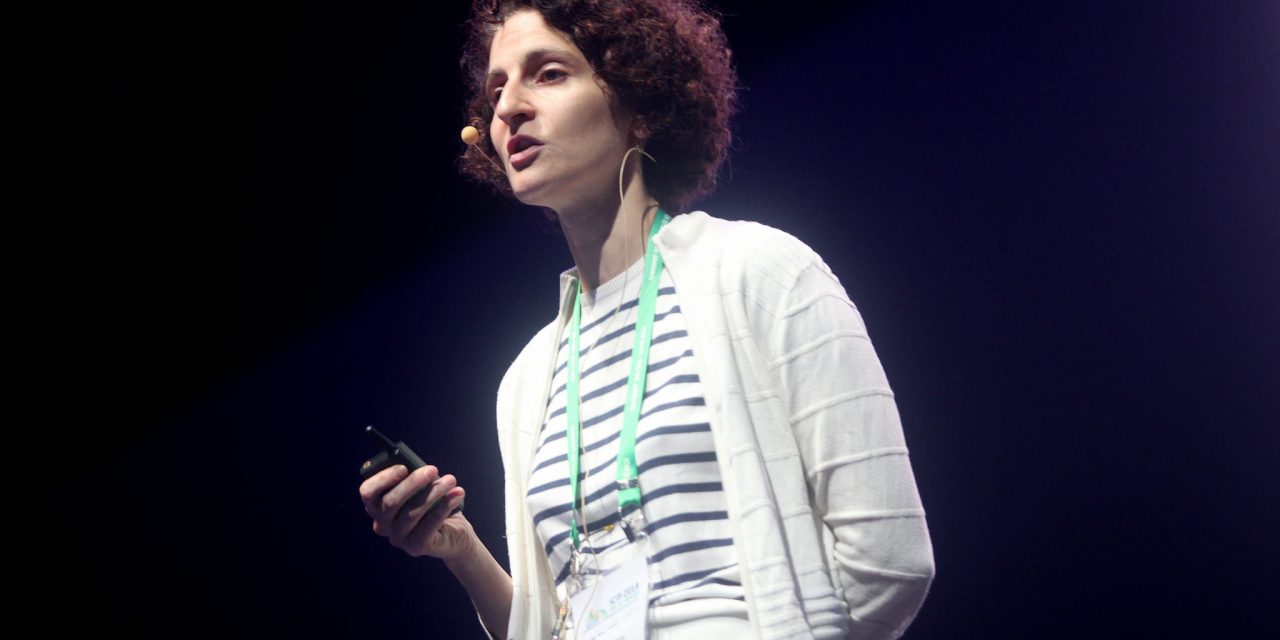August 2, 2018, 12:31 pm

Sylvia Serfaty uses math to predict what happens in physical systems—physics, classical and quantum mechanics, statistical mechanics, random matrices and even approximation theory. Based at New York University, Serfaty gave a plenary talk at ICM 2018 on August 2 called “Systems of Points with Coulomb interactions.”
Serfaty is a French mathematician working in the United States. She won the 2004 EMS Prize for her contributions to the Ginzburg–Landau theory, and the Henri Poincaré Prize in 2012. She went on to win the Mergier–Bourdeix Prize (fr) of the French Academy of Sciences in 2013.
Read more:
Coulomb’s law is a law of physics for quantifying the amount of force with which stationary electrically charged particles repel or attract each other. A Coulomb interaction (also called electrostatic force or Coulomb interaction) describes the attraction or repulsion of particles or objects because of their electric charge.
Serfaty’s work describes the patterns that particles form when they must stay together but at the same time are repulsed by each other.
“You have particles that want to repel each other because they want to be far from each other,” Serfaty said. “Why are the particles repelling each other but they are still forced to stay together? How they organize themselves? What are the patterns that they form?”
Serfaty proved that in the two-dimensional space, particles make triangle lattices when they repulse but must stay together. But, it is unknown what patterns the particles make in higher dimensions like the three-dimensional space. “It is believed that they form they form these triangular dimensions in two-dimensional space and in higher dimensions we do not know,” she said.
The analysis of Coulomb systems is at the crossroads of several branches of mathematics (analysis, PDE, probability, number theory, geometry). Large Coulomb systems exhibit a collective (macroscopic) behavior which can be understood by mean field theory. Their microscopic behavior can be understood by expanding to the next order after the mean field limit and leads to crystallization conjectures and questions.
A key tool is to phrase the energy in terms of the Coulomb potential generated by the configurations, then things become “local” and additive. This approach also works with temperature and shows a rigid and Guassian nature of fluctuations as well as a variational characterization of limiting point processes where order and disorder are in competition.